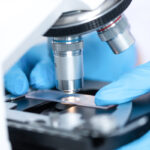Vaccination and Before in 7 Articles

İçindekiler
Toggle1- What is vaccination?
The insemination method is one of the assisted reproduction methods. The man’s sperm sample is taken, suitable conditions are created and transferred to the woman’s uterus.
2- When should vaccination be administered?
Vaccination can be used in various situations. In cases where vaccination is preferred:
- Chocolate cyst,
- Mild lesions in the tubes,
- Mild sperm disorders,
- Unexplained infertility,
- Situations that prevent sexual intercourse.
- Vaccination can also be performed on expectant mothers who are receiving treatment for ovulation problems.
3- Situations to be prepared before vaccination
In the couple who will undergo insemination, it is first necessary to determine whether they are unable to conceive naturally. After this stage, it is necessary to determine whether the couple is suitable for pregnancy.
Then, a sperm analysis is requested from the male candidate. Sperm analysis may be requested more than once. A detailed examination is also performed on the woman. The uterus and ovaries are examined with an ultrasound. A hormone test may be requested to determine the chance of success. HSG, or a hysterosalpingogram, may be taken to determine the patency of the tubes.
4- Ovulation drugs
It may be necessary to use ovulation drugs before insemination treatment. In this way, the number of eggs is increased and the chance of success in treatment increases. Ovulation drugs are started during the menstrual period. The condition of the eggs is monitored by ultrasound. When the eggs are mature, an injection is given to crack the eggs. Then, insemination treatment is started.mu ise ultrasondan takip edilir. Yumurtalar olgunlaştığı zaman yumurtaların çatlaması için bir iğne yapılır. Ardından da aşılama tedavisine başlanır.

5- What tests are performed before vaccination?
Before insemination treatment, some tests are performed to investigate various conditions. These tests are performed to investigate factors such as whether there is a blockage in the woman’s tubes, and the mobility and adequacy of sperm in the male candidate.
Tests performed on men
- Semen analysis
- Sperm values after washing
- Sperm count and motility status
- MAR test
- Hormone profile
- Detailed morphological evaluation
- Systemic, local physical examination
Tests performed on women
- Systemic, local examination
- Visualization of tubal passage (HSG, laparoscopic surgery)
- Prolactin
- TSH
- Progesterone administered on the 21st day of menstruation
When ideal conditions are met for insemination, on the day of ovulation, sperm is prepared using special methods and transferred into the uterus with the help of a cannula.
6- How is the sperm sample taken for insemination?
- Father candidates provide their sperm samples at the center. The sperm sample is provided in a private room without using any foreign substances.
- Male candidates should not have sexual intercourse for 3 days before providing a sperm sample.
- The sperm sample is taken by masturbation.
- The male candidate should be provided with a sterile container in which to give the sample.
- Before the act of masturbation, the male candidate should ensure the hygiene of his hands and genitals and dry them.
- During the labor phase, the male patient should not use any different or foreign materials such as oil or cream.
7- When is vaccination applied?
- Insufficient sperm count,
- Low sperm motility,
- In unexplained infertility problems,
- In cervical mucus problems,
- Due to anatomical problems of the cervix,
- If there is an antibody against sperm, that is, if there is an immunological factor,
- If the female candidate does not ovulate or has insufficient ovulation,
- It is a preferred method for sexual dysfunction.






